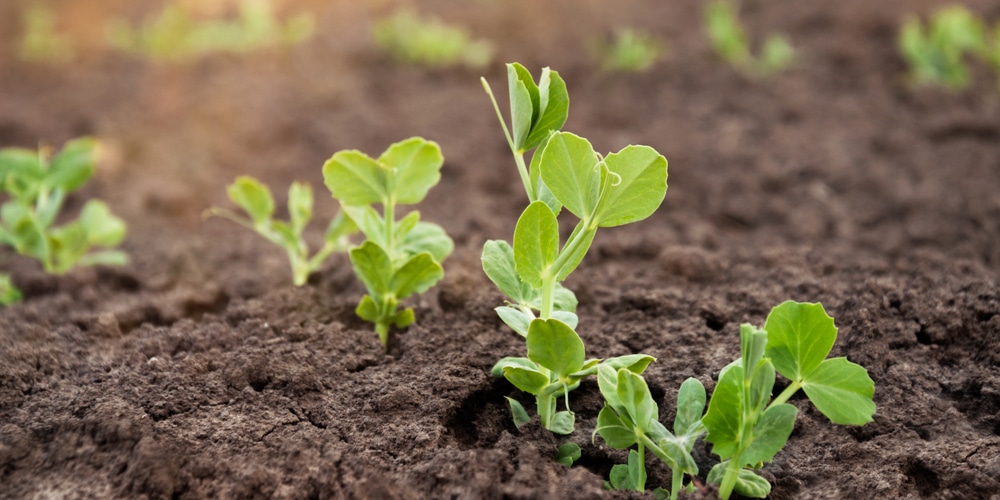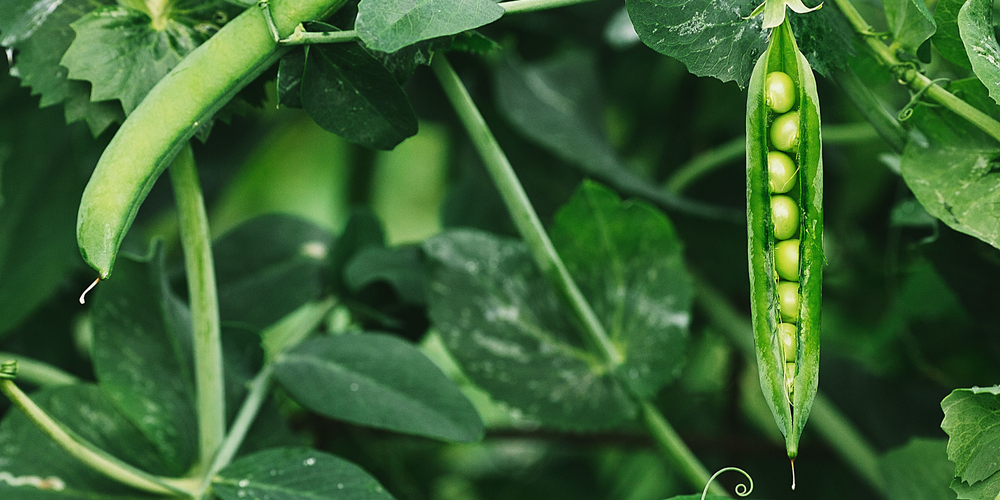When to plant peas depends on the climate in your region. For zones 5 and below, it’s important to plant your peas in the spring, so they mature while the weather is still cool.
Peas are annual, which means they do not survive more than one growing season. If you plant them in early spring, most varieties of peas will be ready for harvest 60 to 70 days after planting. To ensure maximum yield, planting peas in late summer is ideal. This is because it allows the plants enough time to grow large before cold weather arrives and forces them into dormancy.
About Peas
There are three basic varieties of peas. These are:
1. Snap peas (P. sativum var. macrocarpon ser. cv.)
These are very tender, sweet, and delicious and are also the easiest to grow in the garden. To grow snap peas, simply plant seeds directly into the soil in a well-drained garden bed. If you have a shortage of nutrients in your soil or if you are planting in very heavy clay soil, it is best to add some compost to your planting hole. The seeds will germinate quickly and can be harvested 3 to 4 months after planting.
2. Snow peas (P. sativum var. macrocarpon)
Snow peas and sugar snap peas tend to have similar flavors, but they aren’t quite as tender as the other type of pea—the shelling pea (which is related to snow pea). They are edible-pod peas that have flat pods and thin pod walls. Snow pea seeds need to be planted in the fall, so they mature while the weather is still cool.
3. Sweet peas (Pisum sativum ssp. sativum)
Also known as garden peas or English peas, these are the most tender of all the peas. Sweet peas are an annual type of pea that does not tolerate too much heat well and therefore grow best in areas where summers are cool, and winters are cool or mild. The seeds need to be planted in early spring, so the plants can mature before cold weather arrives.
When planting peace, it’s crucial to choose well-drained soil that has a high organic content. The soil should be rich in organic matter and have a pH between 6.0 and 7.5. Garden pea seeds should be planted at a depth of 1/2 inch or less, while snap and snow pea seeds should be planted at 1 inch or less. When choosing your site for your peas, you want to make sure that it receives full sun for about six hours a day.
How to Plant Peas
Peas are one of the easiest and most rewarding vegetables you can grow in your garden. You simply need to follow these steps:
- To speed up germination, you can soak the seeds in water all night before planting.
- When planting, it’s important to choose well-drained soil that has a high organic content. The soil should be rich in organic matter, and the nutrients should be well balanced. Peas need phosphorus, potassium, and nitrogen.
- Garden pea seeds should be planted in rows 7 inches apart
- When choosing your site for your peas, you want to make sure that it receives full sun for about six hours a day.
- Bush peas can reach a height of 18- 30 inches tall.
- Water peas sparsely until they are established. Peas require watering every now and then but ensure that the soil is well-drained to prevent root rot- you shouldn’t allow the soil to dry out either.
- Gently remove the weeds by hand; this is important because peas are delicate, short-lived crop.
- Harvest your peas as soon as they are ready, and do not let them turn brown, else they will become tough.
- Ensure the peas are growing in the right condition.
Pea leaves can turn yellow for several reasons:
- The soil is too wet.
- The pea is growing in the shade.
- The plant is stressed.
- The pea is being grown in the wrong soil or too small of a container.
- The sun has been too hot, or the soil has been too dry.
- The pea has no fertilizer!
- Fungus is eating the plant!
- The pea has a disease.
- The soil is too alkaline.
- The weather is too cold
• Fertilizing is not usually necessary if the plants are well mulched with shredded leaves, grass clippings, or another biodegradable material.
• Most varieties of peas will be ready for harvest 60 to 70 days after planting.
Related Article: Pea Plant Growth Stages: What to Expect when Growing Peas

